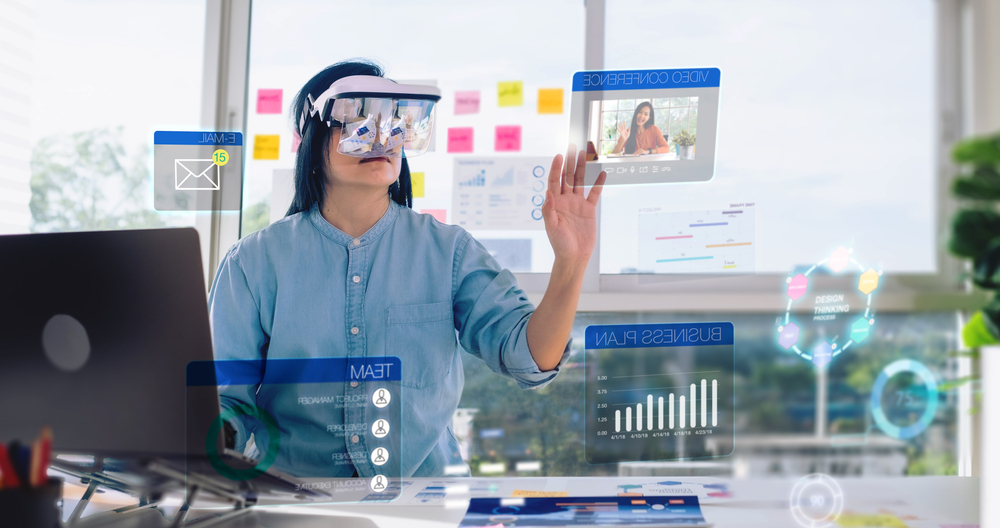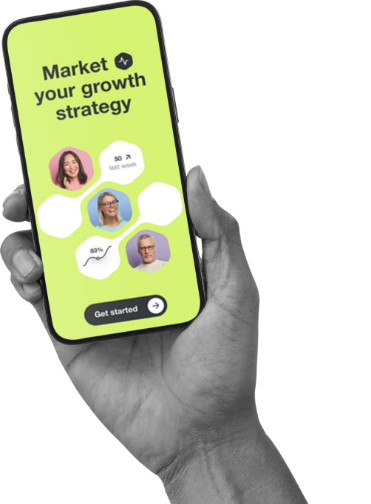Wearables have been a major part of our life and a significant digital change for a long time now. It is as of now not simply a niche market, yet rather a quickly developing industry that is impacting how we communicate with our gadgets. Mobile applications have taken this comfort to a higher level by giving users the capacity to control their wearable gadgets from their cell phones. This component has become progressively famous as users can now control their wearable gadgets without taking them off or intruding on their exercises.
In recent years, the Internet of Things (IoT) has gained popularity, and wearable technologies are no exception. Wearable device mobile apps are now combining with Internet of Things (IoT) devices to offer users a seamless experience. For instance, wearable gadgets can now use smartphone apps to manage smart home appliances. Users now find wearable gadgets more appealing because they can control various devices right from their wrists.
The Impact of Artificial Intelligence in Enhancing Wearable Mobile Apps
Enhanced User Experience
Wearable device users now have access to a level of personalization and customization that was previously impossible. Mobile apps provide customers with a variety of customization choices that let them personalize their wearable app development technology to suit their own requirements and tastes. Because users can now customize their devices to meet their requirements and lifestyles, wearable technology has become more appealing to them. Tracking one’s fitness and health is a common use for wearable technology.
Wearables can recognize and react to the user’s context, such as location, time of day, and activity, with the help of AI. This increases the app’s functionality by enabling it to provide pertinent information and services.
Also Read: Augmented Reality And Virtual Reality In Wearable Mobile App Development
Improved Health And Fitness Tracking
Growing numbers of people are utilizing wearables to track their fitness levels, which has made personal fitness tracking increasingly popular. Users can establish objectives, measure their progress, and receive individualized feedback on their fitness performance via wearables.
The purpose of wearable medical devices, which are worn on the body to monitor and collect health-related data, is to help patients and their healthcare team better understand their health state and decide what treatments would work best for them. These capabilities are further improved by the incorporation of wearable technology with AI and ML.
Today, you can use wireless, noise-canceling headphones to listen to your favorite music and wirelessly cast a virtual trainer on your smart TV. The way you work out will also alter as virtual coaching and AI become more prevalent. Numerous social fitness applications exist that can make working out with a group activity. Numerous applications offer challenges, incentives, and community assistance to make training fun and keep you motivated.
Intelligent Sleep Monitoring
Instead of people coming to a lab, researchers can monitor a person’s sleep quality over a long period using a radio-emitting, artificial intelligence (AI)-enabled gadget and an algorithm that decodes those signals.
Applications for improving sleep quality powered by AI are made to assist users in setting up ideal sleeping conditions and establishing sound sleep routines. White noise makers, guided meditation apps, and sleep coaching services are some examples of these applications. These applications’ AI algorithms analyze user information and preferences to tailor content to each user’s particular requirements.
Smart lighting aids in establishing the ideal environment for rest and sleep. You can dim the lights to the ideal level or turn them off without getting out of bed. A restful night’s sleep may be aided by listening to soothing music or background noises.
Seamless Integration With Virtual Assistants
AI in speech recognition is used for more than just voice-to-text conversion. A more personalized and natural user experience can be delivered by using advanced AI algorithms to evaluate the context, tone, and emotion in the user’s speech. For instance, based on a user’s speech, AI may determine whether they are worried and change the device’s response appropriately. This degree of sophistication is a game-changer, especially for wearable fitness and health gadgets that can now offer individualized health recommendations based on the user’s voice and real-time feedback.
Siri and Google Assistant are two of the most well-known virtual assistants on the market. Both of these voice assistants powered by AI can assist you with tasks, provide information, and manage different home appliances. The two, however, have some significant distinctions that may make one more appealing to you than the other. To aid you in selecting the best voice assistant for you, we’ll compare Siri vs Google Assistant in this blog post.
The rapid advancement of information and communication technology has given rise to a new kind of human-computer interaction, which has been sparked by wearable technologies. With the use of this technology, users may move around more easily and stay connected so they can easily access internet information and stay in touch with others.
Predictive Analytics For Health Link Assessment
Medical Professionals utilize machine learning as a tool to care for patients and manage clinical data. It is an example of artificial intelligence in action, where computers are programmed to think and learn in similar ways to people. This can be used in the healthcare industry to gather and manage patient data, spot trends in healthcare, suggest therapies, and more.
AI will radically alter how medicine and healthcare are provided: Machine learning can be used to assess diagnostic patient data, such as that from ECG, EEG, or X-ray pictures so that diseases can be identified at an extremely early stage based on tiny changes. The technical difficulty of implanting AI within the human body still exists. Researchers have finally succeeded in creating an implanted AI platform that can distinguish between normal and abnormal patterns in biological data like heartbeats in real-time.
In order to lighten the strain on healthcare providers and eventually reduce their costs, AI can be used to automate administrative duties including pre-authorizing insurance, tracking down outstanding invoices, and preserving records.
Real-Time Emotion And Stress Analysis
To assess sentiment and emotions, AI can examine user interactions and behavior. With the help of this data, the app’s replies and contents can be modified to improve users’ empathy and emotional intelligence.
There are many ways to identify stress levels:
- Biometric data analysis: Physiological data can be gathered by wearable devices having biometric sensors, such as heart rate monitors and skin conductance sensors. These data can be analyzed by AI systems to look for patterns indicating stress, including elevated heart rate or alterations in skin conductance.
- Activity and behavior tracking: Wearable tech or smartphone apps that monitor a person’s daily activities and habits can collect data that AI can analyze. Stress might be indicated by changes in activity levels, sleep patterns, or social interactions.
- Smart interventions: Based on the recognized stress levels and triggers, AI can offer tailored recommendations or treatments. This can entail recommending stress-reduction activities, mindfulness exercises, or relaxation techniques.
You can manage stress by:
- Detecting early warnings and indications of a major disaster
- AI Chatbots for Therapeutic Purposes
- Creating a conducive environment
Smart Home Integration For Convinience
Wearables’ seamless control of smart home appliances is a practical and effective approach to overseeing and communicating with your connected home’s gadgets. Smartwatches and other wearables can act as a convenient remote control for a variety of smart home devices.
An effective impact of artificial intelligence that can improve user experiences across a range of devices and platforms is the automated adjusting of settings depending on user preferences and behavior. AI may automatically change settings to match individual preferences by examining user data and behavior patterns, enhancing and streamlining the user experience.
In a variety of domains, AI has the potential to improve comfort, energy efficiency, and security, making our lives more convenient, sustainable, and secure:
- Smart home automation: By adjusting temperature, lighting, sustainable and secure.
- Security and surveillance: By analyzing video feeds, detect unusual activities.
- Energy management and optimization: Operation of appliances and devices to reduce energy.
Context-Aware Safety Features
A system called fall detection technology video analytics and machine perception to identify people who are falling. It was created specifically for those with illnesses or disabilities, sending out fast alerts to authorized persons so they could respond right away.
Online tracking and analysis of human physiological and pathological data is done by health monitoring systems (HMSs), ideally in real-time. These systems’ main function in data analysis is to take low-level biosensor data and turn it into high-level, relevant knowledge.
Through the use of sensors, HMS continuously gathers data on human health factors, enabling online and real-time analysis of an individual’s present state of health. Therefore, early detection of emergent symptoms and disease prediction are two of the primary advantages of HMS over conventional healthcare methods. Apps for mobile devices can use cellular signal technologies and services like GPS to pinpoint a user’s location.
In the heart of this technological synergy lies AI’s voice, orchestrating a symphony of insights and responses that mirror the user’s rhythm. This harmonious blend of wearable technology and AI voice creates a tapestry of personalized experiences, ensuring that every interaction is as individual as the user themselves.
Enhances Data And Security
- Secure Communication: To safeguard data during transmission between users or systems, artificial intelligence (AI) can be utilized to create strong encryption methods and secure communication channels. AI algorithms can assist in creating effective, attack-resistant encryption methods.
- Data Access and Control: AI can aid in the development of intelligent access control systems that specify who has access to what data and under what circumstances. This may aid in preventing unwanted access to private data.
- Predictive Analytics for Threat Detection: AI can aid in the development of intelligent access control systems that specify who has access to what data and under what circumstances. This may aid in preventing unwanted access to private data.
Secure User Authentication Through Biometrics And Facial Recognition
Based on distinctive biological characteristics like fingerprints, facial features, and speech patterns, biometric authentication is a highly secure and trustworthy type of authentication. However, despite being more trustworthy and secure than conventional password-based techniques, biometric authentication is not completely reliable.
In order to ensure that data is completely protected from unauthorized access and use, malware, and other cybersecurity threats, data compliance is a process that defines the applicable governance for data protection, security, storage, and other operations. It also develops policies, processes, and protocols.
Wearable technology and remote monitoring systems with AI capabilities can continuously gather and evaluate patient data. Vital signs, exercise levels, and other health data can all be tracked by these devices.
- Improved User Experience: Personalization AI systems may examine user preferences and behavior to offer recommendations and material that are specifically tailored to each user, improving the overall user experience.
- Health Monitoring: Wearable Technology AI is able to analyze data from wearable gadgets like smartwatches and fitness trackers to keep track of users’ heart rates, sleep cycles, and physical activity levels.
- Convenience: Smart Home Automation AI-driven smart home systems may learn user preferences and behaviors to automate tasks like managing household appliances, regulating the temperature, and controlling lights. This improves convenience and energy efficiency.
- Security: AI that protects privacy AI can be utilized to create privacy-enhancing solutions that enable data analysis without jeopardizing personal information.
Future developments and advances in AI have enormous and fascinating promise. AI is anticipated to play a significant role in revolutionizing a variety of businesses and facets of our life as technology continues to advance.







